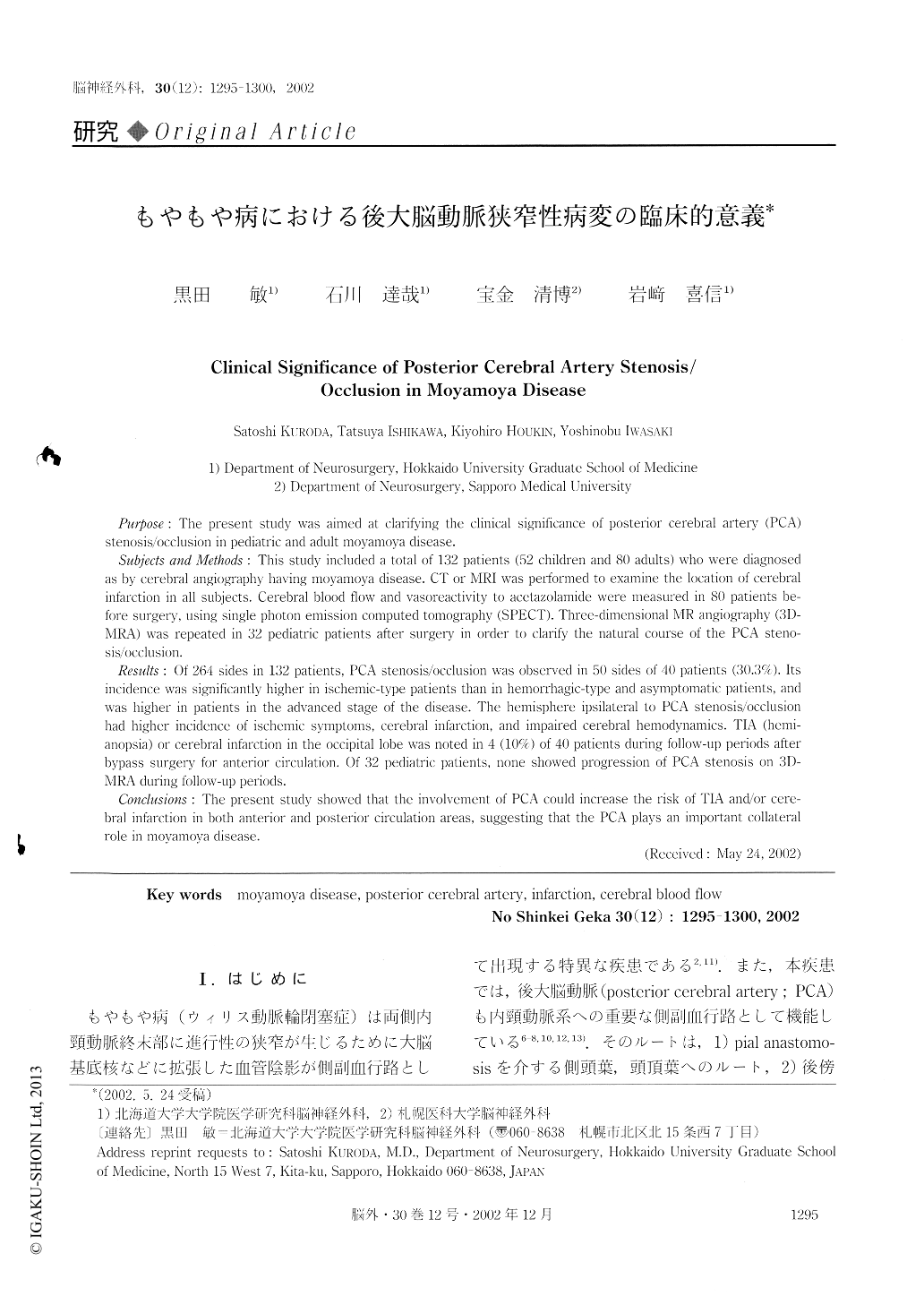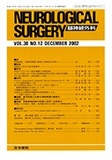Japanese
English
- 有料閲覧
- Abstract 文献概要
- 1ページ目 Look Inside
Ⅰ.はじめに
もやもや病(ウィリス動脈輪閉塞症)は両側内頸動脈終末部に進行性の狭窄が生じるために大脳基底核などに拡張した血管陰影が側副血行路として出現する特異な疾患である2,11).また,本疾患では,後大脳動脈(posterior cerebral artery;PCA)も内頸動脈系への重要な側副血行路として機能している6-8,10,12,13).そのルートは,1)pial anastomo-sisを介する側頭葉,頭頂葉へのルート,2)後傍脳梁動脈(posterior pericallosal artery)を介する前大脳動脈へのルート,3)拡張した視床穿通動脈(thalamo-perforating artery)や後脈絡動脈(pos-terior choroidal artery)によるposterior moyamoya vesselsを介するルートに大きく分類することができる.しかし,もやもや病の病期が進行すると,PCAの近位部にも狭窄性病変が出現してくることが以前より知られており,これが脳循環全体に及ぼす影響はきわめて大きいと考えられる.
Purpose: The present study was aimed at clarifying the clinical significance of posterior cerebral artery (PCA) stenosis/occlusion in pediatric and adult moyamoya disease. Subjects and Methods: This study included a total of 132 patients (52 children and 80 adults) who were diagnosed as by cerebral angiography having moyamoya disease. CT or MRI was performed to examine the location of cerebral infarction in all subjects. Cerebral blood flow and vasoreactivity to acetazolamide were measured in 80 patients be-fore surgery, using single photon emission computed tomography (SPECT).

Copyright © 2002, Igaku-Shoin Ltd. All rights reserved.


